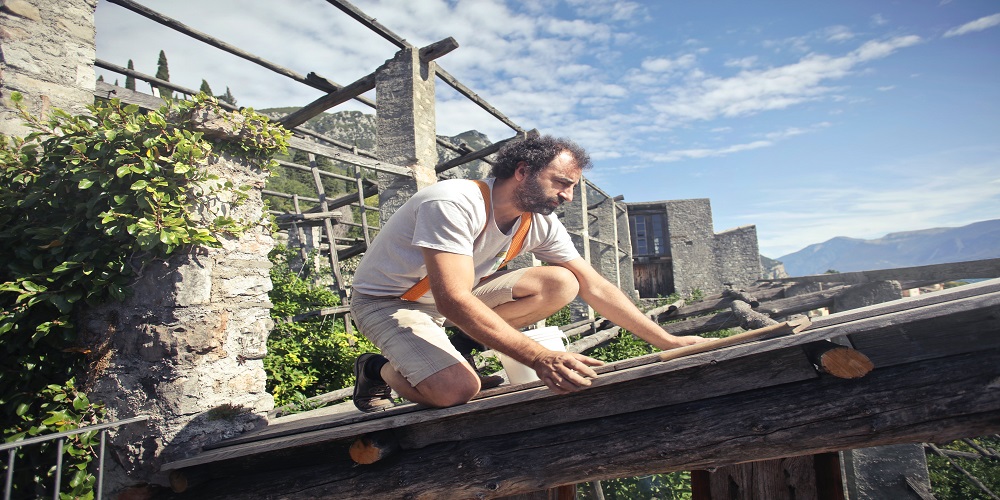Severe storms that produce hail can wreak havoc on roofs. Hailstones pelt roofs at high speeds, denting and damaging shingles, flashings, vents and other roof components. The extent of hail damage depends on factors like hailstone size, roof type and age. In this article we will discuss about that How Much Damage Can Hail Inflict on a Typical Roof
You can contact the best-rated roofing company for a free roof inspection after hail storms hit your neighbourhood. Their certified technicians can assess hail damage and recommend repair options to keep your roof weather-tight.

What Types of Damage Can Hail Cause?
Hailstones cause damage when they impact and dent roofing materials. The most common types of hail damage include:
- Shingle denting and fracturing – Hailstone’s dent and cracked asphalt shingles break their waterproof seal. Cracked shingles can curl and expose nail heads underneath.
- Loss of roof granules – Hail strips protective mineral granules off shingles, decreasing their lifespan and weather resistance. Areas stripped of granules are more vulnerable to UV damage and deterioration.
- Punctured flashing – Metal parts around chimneys, vents, and valleys on the roof can get holes from hail, causing leaks. These holes need to be fixed to keep the water out.
- Bent ventilation – Things on the roof that help air move, like ridge vents, can get squished by hail. This damage can stop air from flowing well and make it harder for the roof to breathe.
- Gutter and siding dimpling – The long tubes (gutters) and walls of the house made of materials like vinyl or aluminum can get little dents from hail. It might not stop them from working, but it can make the house look less nice.
When a hailstorm happens, it can damage roofs. Big hailstones and strong winds can cause a lot of harm. Sometimes, one house can be damaged while another right next to it is perfectly fine.
How Do Hailstone Size and Speed Affect Damage?
Larger hailstones cause more roof damage because they impact shingles with greater force. The Toro Hailstorm Scale rates hail severity from H0 to H10 based on hailstone size:
- H0 to H1: Pea-sized, no damage expected
- H2 to H4: Marble to golf ball-sized, moderate damage potential
- H5 to H6: Golf ball to tennis ball-sized, significant damage likely
- H7 to H8: Tennis ball to baseball-sized, severe damage expected
- H9 to H10: Baseball to softball-sized, catastrophic damage
Big hail can damage roofs and houses. Hail that’s 2 inches or more can make holes in roofs and walls. If the hail is 3 inches or larger, it can seriously damage roofs and even make them fail.
Hailstones are chunks of ice that fall from the sky during storms. Imagine them as frozen raindrops. How much damage they cause depends on how fast they are falling. Normally, hail falls at a speed of 25 to 40 miles per hour (mph). That’s like a car driving through your neighbourhood.
How Do Roof Type, Age and Condition Factor In?
Certain roof types are more vulnerable to hail damage than others. Here are the effects of roof type:
- Asphalt shingles – Most prone to denting, cracking, and granule loss. Impact resistance depends on shingle quality.
- Metal roofs – Hail dents and perforates exposed metal panels. Standing seam designs resist better than exposed fastener panels.
- Tile roofs – Concrete and clay are brittle and prone to cracking and chipping from hail impact.
- Low-slope roofs – Built-up, modified bitumen, TPO and EPDM membranes can get bruised and cracked, causing leaks.
A roof’s age, material quality and existing condition also affect hail vulnerability:
- Old roofs can get damaged more easily by hail because they wear out over time. New roofs are better at handling hail because they are made with stronger materials.
- If you use good quality materials, like special shingles that can resist damage, your roof will stay safe even during a hailstorm.
- Roofs that are already in bad shape because of wind, old age, or if they were not installed properly, can be harmed even more by hail.
Conclusion
Hail is like frozen raindrops that can fall from the sky during a storm. When hail hits your roof, it can create dents or even big damage. It’s essential to take care of your roof because it protects your home from bad weather.


